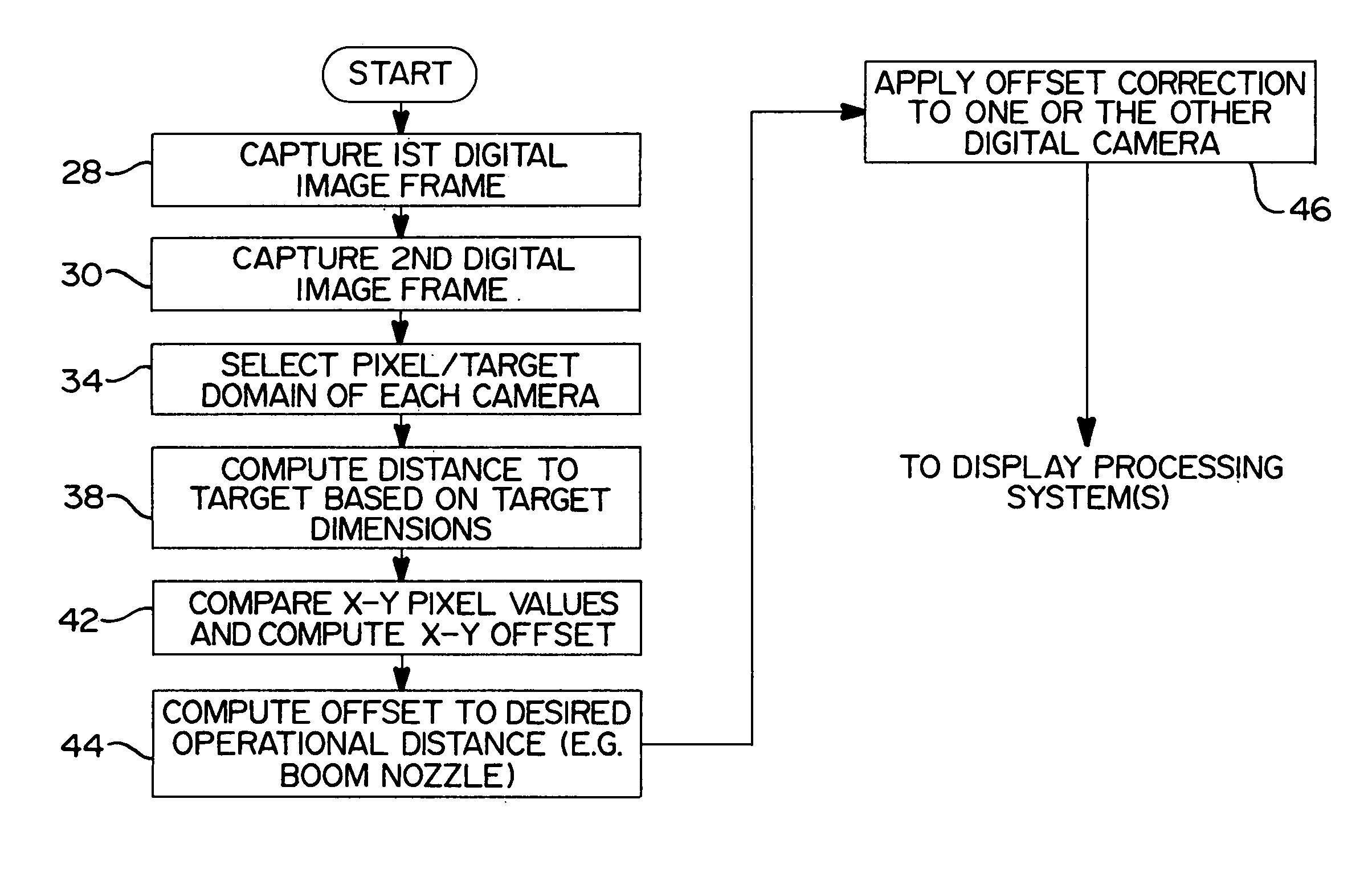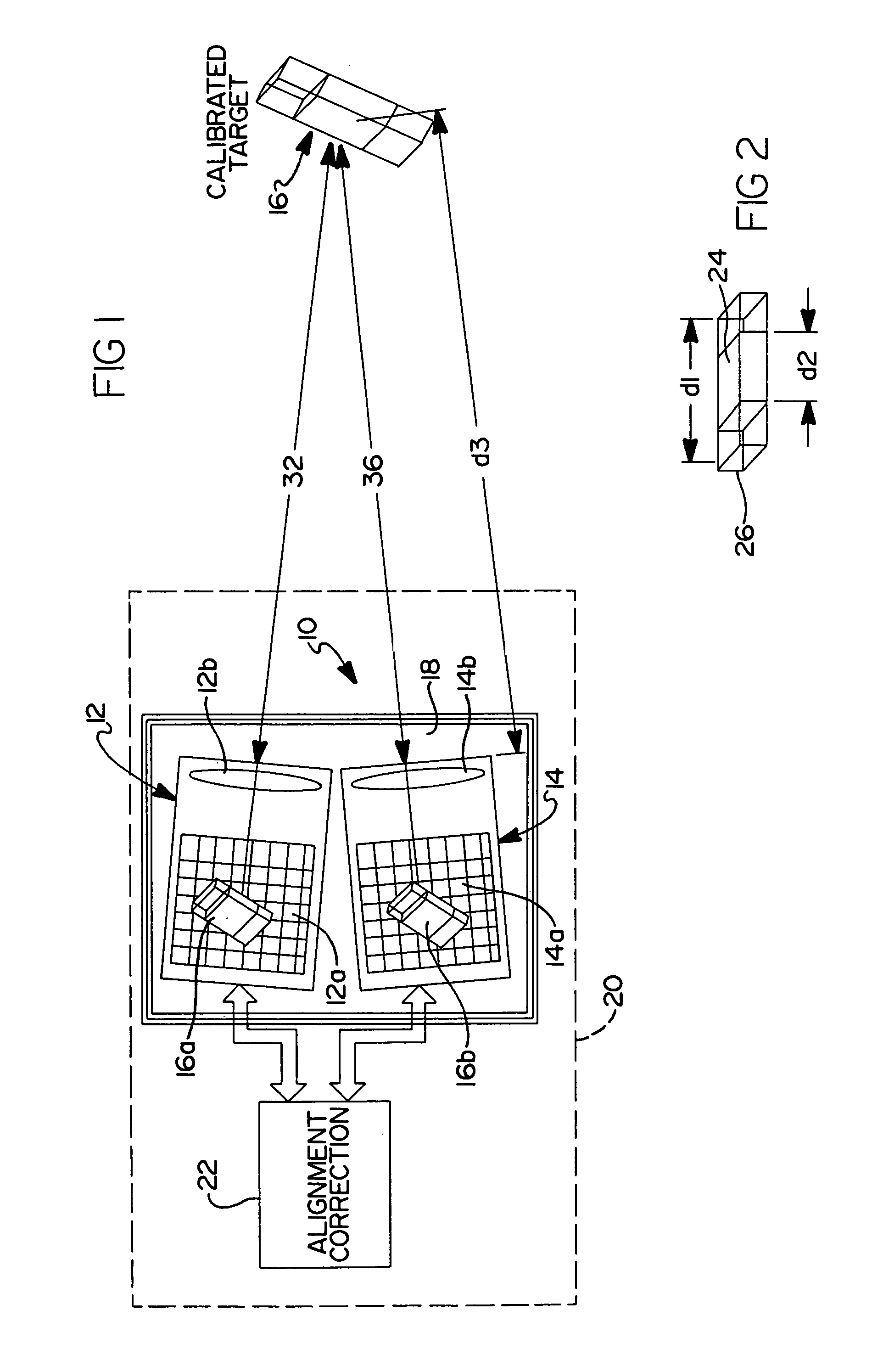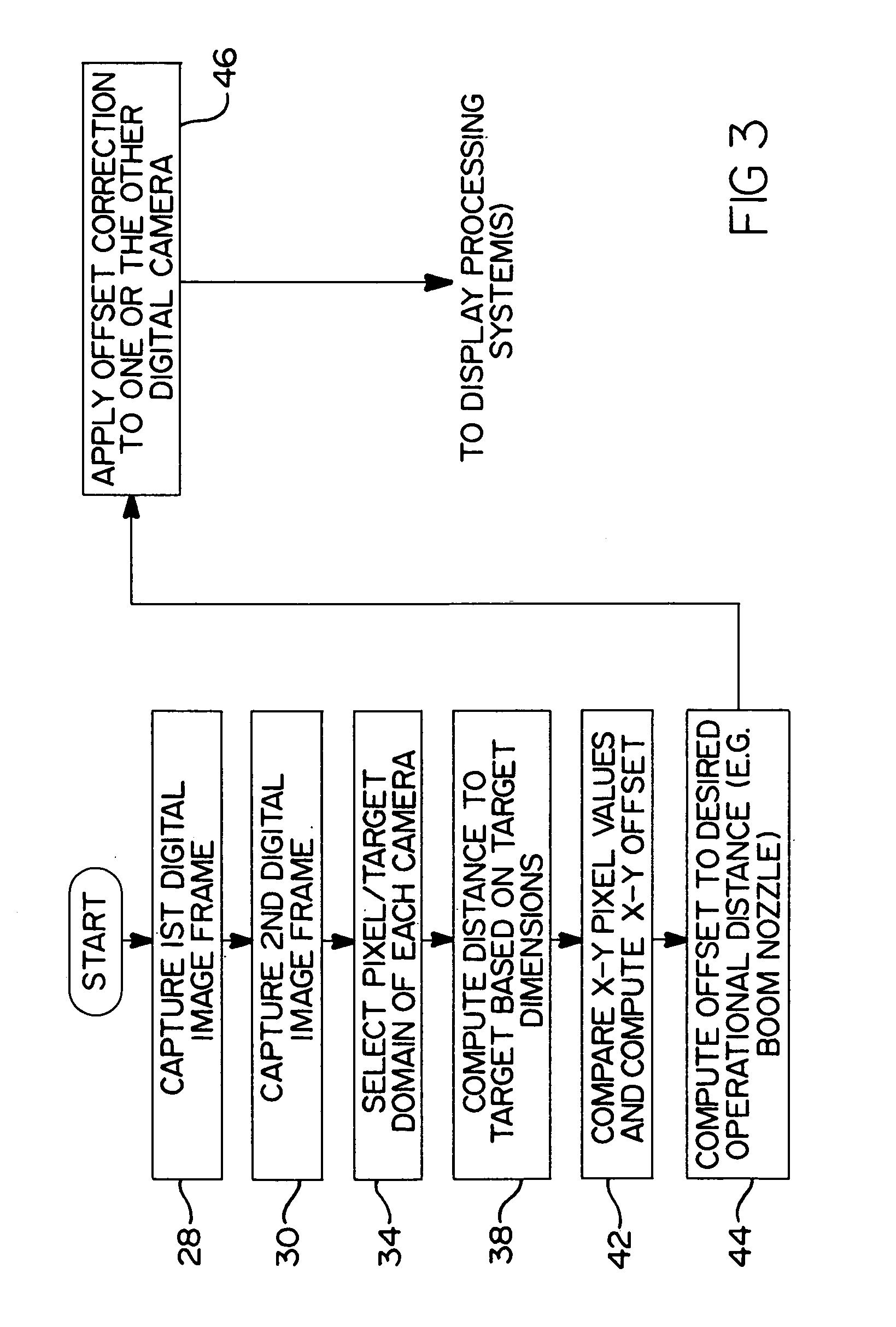Method and apparatus for aligning a pair of digital cameras forming a three dimensional image to compensate for a physical misalignment of cameras
a technology of digital cameras and three-dimensional images, applied in the field of digital camera systems, to achieve the effect of eliminating time and expense and very quickly performing alignmen
- Summary
- Abstract
- Description
- Claims
- Application Information
AI Technical Summary
Benefits of technology
Problems solved by technology
Method used
Image
Examples
Embodiment Construction
[0013]The following description of the preferred embodiment(s) is merely exemplary in nature and is in no way intended to limit the invention, its application, or uses.
[0014]Referring to FIG. 1, there is shown a digital imaging system 10 in accordance with a preferred embodiment of the present invention for forming a composite, three dimensional digital image. System 10 includes a pair of digital cameras 12 and 14 which each are directed at a common target 16. The cameras 12 and 14 are also mounted on a platform 18 which is in turn supported on a different structure or a platform 20, such as possibly an aircraft, bus or other motor vehicle, ship, or even stationary support surface. Accordingly, while it will be appreciated that the present invention 10 will have particular utility with regard to use on mobile platforms, the invention is not so limited and may be used in connection with fixed (i.e., ground-based) support structures.
[0015]The imaging system 10 further includes an alig...
PUM
 Login to View More
Login to View More Abstract
Description
Claims
Application Information
 Login to View More
Login to View More - R&D
- Intellectual Property
- Life Sciences
- Materials
- Tech Scout
- Unparalleled Data Quality
- Higher Quality Content
- 60% Fewer Hallucinations
Browse by: Latest US Patents, China's latest patents, Technical Efficacy Thesaurus, Application Domain, Technology Topic, Popular Technical Reports.
© 2025 PatSnap. All rights reserved.Legal|Privacy policy|Modern Slavery Act Transparency Statement|Sitemap|About US| Contact US: help@patsnap.com



